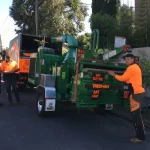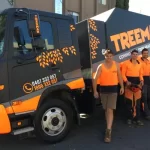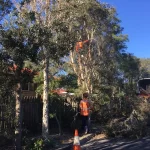A Quick Guide to DYI Tree Felling – Treeman Melbourne
When it comes to tree felling it’s generally best to have a professional come in and get the job done. For those of you that would like to do it yourself though, we’ve prepared this quick guide. All safety equipment and precautions must be taken before commencing work.
Before reading on please note – this is only a quick guide and should not be taken as ‘the best’ or ‘the safest’ method for doing so. At Treeman Melbourne, we always recommend for you to outsource your tree felling work to a professional.
Step 1 – Planning
Tree felling requires a lot of planning. You need to know the tree and the equipment you’re using. By planning ahead you should be sure to use the right chainsaw for the job. Furthermore, it’ll make post-felling work a lot easier as you’ll have all the equipment ready to go. Part of your planning process should also include getting all necessary safety equipment. Lastly you need to check for any power lines, houses or any other obstructions nearby.
Step 2 – Where is the tree leaning towards
Try to figure out where the tree’s natural falling direction would be. Try to determine this by considering where the larger branches are located. Also try to see if there is a natural lean in the tree towards one side.
Step 3 – Prepare the trunk
Once you’ve set-up your cutting safety signs and marked out the proposed direction for the tree to fall, it’s time to start preparing the trunk. You do this by pruning the trunk to remove any branches that will get in your way when cutting the tree. This will also give you more room to work with.
Step 4 – Know your cutting style
Decide upon which cutting technique will best suit your needs. Try to take into consideration the height and width of the tree. When it comes to tree felling, it’s not just one chainsaw fits all. Try to do some research and see which chainsaw is best for the job.
Step 5 – Does the trunk show signs of rotting?
If you’re cutting into the trunk and notice that there are signs of rotting then take care. With signs of rotting at the trunk, it generally means that there is even more rotting up higher in the tree. This will make all the upper branches weaker and increases the chances of them falling.
Step 6 – PUSH!
If you’re tree isn’t too big you can usually bring it down by giving it a good push. If not, there are several felling tools that may be applicable here.
So there you have it, our quick guide to DYI Tree Felling. You can also visit our website on Tree Removal Melbourne HERE to get more information on our tree removal services.






